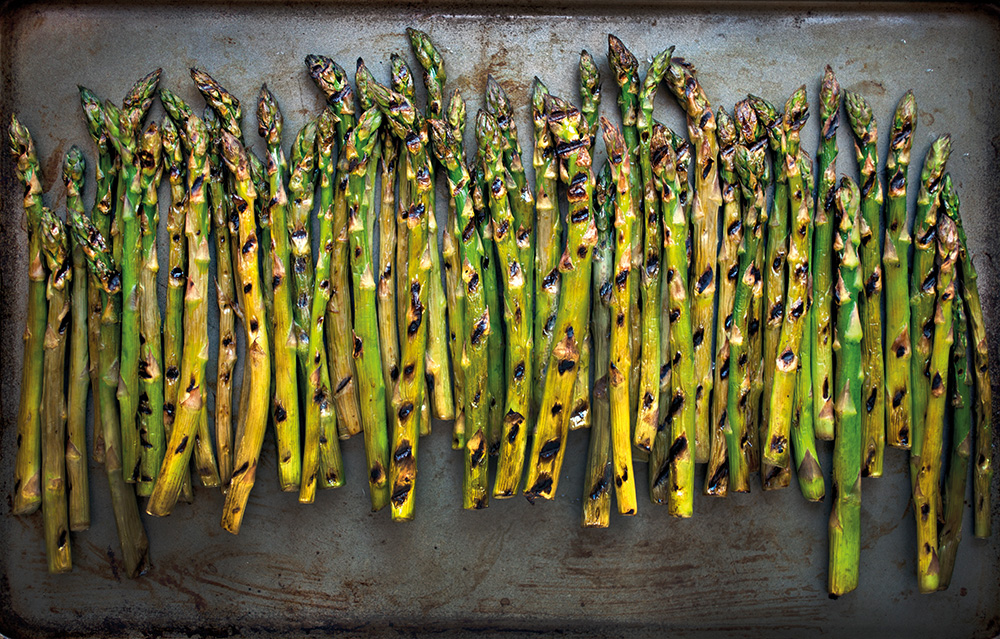As things start sprouting this season, Alex Rushmer reflects on his membership of the mysterious ’asparagus club’
In the mid 1920s here in Cambridge, a group of undergraduates at Trinity Hall established a dining society. Their intentions were, no doubt, gustatory in nature – and I’m sure there was a desire to create a thinly veiled excuse (and environment in which) to drink quantities of bordeaux, burgundy and brandy. In order to satisfy the college authorities, they instead chose to officially dedicate their endeavours to ‘the shared enjoyment of the revered asparagus plant’. Despite a few periods of mostly brief, but occasionally protracted, stasis, the Asparagus Club remains in existence, with its manifesto as simple as ever: to enjoy the cooking and eating of the noble fern among similarly minded folk.
I know all this because, during my time as an undergraduate, I was both a member and – in my final year – vice-president of the club and, as such, responsible for the organisation and running of three events during the course of the academic year. As much as this may conjure up images of a Wodehousian idyll, the reality was actually far less romantic. Hampered by the realities of living in student accommodation, the wildly ambitious menus were cobbled together over several tiny kitchens, each only equipped with a toaster oven, two electric rings, a microwave and a kettle.
The latter was the appointed vessel in which to cook the star attraction: spears of locally grown asparagus. Looking back, and with a few years’ experience as a professional chef, it certainly wasn’t the most forgiving way to cook the vegetable, although Mrs Beeton may have approved, given how limp and pale the spears turned out. The wines, too, were certainly less notable than I suspect they had been in the early years of the club. We were more likely to sup Blue Nun, Black Tower and Barefoot Cabernet than anything of significant repute.
‘The shared enjoyment of the revered asparagus plant’
While my tenure as a member of ‘that great old fraud of a club’ (as one alum put it when he wrote to me requesting a new tie, his old one having worn out from overuse), didn’t enable me to taste a range of fine wines, it did allow me to fully enjoy eating asparagus for the first time. Before that, it was something of a mystery. Growing up in the 80s and early 90s, asparagus was a rare delicacy to be enjoyed by my parents for just a few short weeks of the year.
I remember visiting a farm with them when I was only about 11 years old. It was run by a retired surgeon who had decided to dedicate his autumn years to the late spring harvest. He told me sometimes the asparagus grew so fast that, by the time he had picked a row, it was possible to return to the start of the same run and harvest again. He slipped a small curved knife from his pocket and, bent double, cut a couple of dozen spears for my Mum and Dad to take home.
They ate them a few hours later at home, steamed and dipped in hollandaise sauce. I was allowed a taste. Usually this is the point in a food writer’s journey when they describe a gastronomic epiphany and explain how their life changed forever at that precise moment. The only thing I remember about the situation was quite how unremarkable the asparagus was, and certainly not worth an hour round trip – and 45 minutes spent in a field.
I’m pleased to say that, since then, my excitement levels at the start of asparagus season have significantly increased. It isn’t just the delight of eating them – cooked simply and served with eggs or butter or some combination of the two – but that asparagus shoots represent the first harvest of the summer growing season. Now, several years down the line, I might even pair it with something cold, crisp and white from Burgundy.

